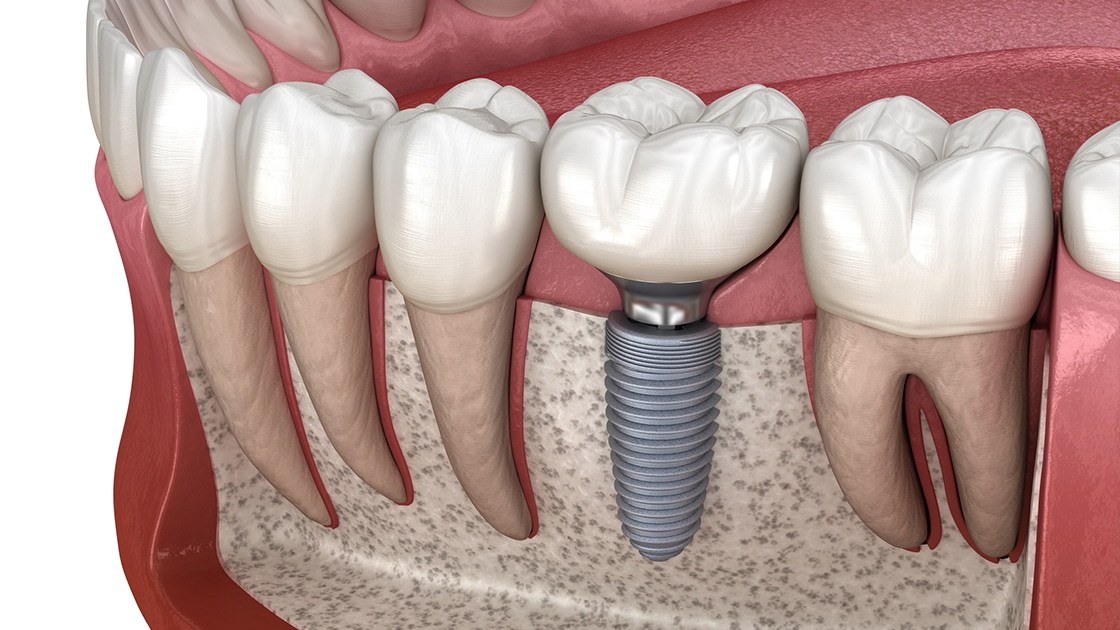Fascination About Dental Sense
Fascination About Dental Sense
Blog Article
The 4-Minute Rule for Dental Sense
Table of ContentsThe Ultimate Guide To Dental SenseThe 9-Second Trick For Dental SenseDental Sense Can Be Fun For EveryoneThe Ultimate Guide To Dental Sense
are medical gadgets operatively dental implanted right into the jaw to restore an individual's ability to chew or their look. They offer assistance for artificial (fake) teeth, such as crowns, bridges, or dentures. When a tooth is shed because of injury or condition, an individual can experience complications such as rapid bone loss, faulty speech, or changes to eating patterns that cause pain.Dental implant systems contain an oral implant body and dental implant abutment and may additionally include an abutment addiction screw. Root canal procedure. The oral implant body is operatively put in the jawbone in location of the tooth's root. The oral implant joint is typically affixed to the dental implant body by the abutment addiction screw and prolongs via periodontals into the mouth to support the affixed fabricated teeth
(https://sitereport.netcraft.com/?url=https://nearme.vip)Framework of The Oral Implant System selecting dental implants, talk with your dental service provider about the potential advantages and risks, and whether you are a candidate for the procedure. Points to consider: Your overall health and wellness is an important factor in establishing whether you are an excellent prospect for dental implants, exactly how long it will certainly require to recover, and how much time the dental implant might remain in area.
Smoking cigarettes may affect the healing procedure and lower the long-term success of the dental implant. The healing procedure for the dental implant body might take numerous months or longer, during which time you typically have a momentary joint in location of the tooth. the oral implant treatment: Carefully follow the dental hygiene directions offered to you by your dental provider.
Our Dental Sense Ideas
Implant failure can lead to the need for one more surgery to repair or replace the implant system. Restores the capacity to chew Restores aesthetic look Aids keep the jawbone from reducing as a result of bone loss Maintains the health of the surrounding bone and gum tissues Assists keep surrounding (neighboring) teeth steady Boosts top quality of life Damages to bordering all-natural teeth during dental implant placement Injury to the surrounding tissues throughout surgery, such as sinus opening Injury throughout surgical procedure (for instance, fracture of surrounding jawbone) Insufficient feature, such as really feeling like the teeth do not attack with each other usually A feeling that the tooth is loosened or twisting in position resulting from an abutment screw loosening up Implant body failure (looseness of the dental implant body) as a result of systemic infection, which may be most likely in people with unchecked diabetes mellitus due to regional infection in bone and gum tissues sustaining the dental implant body because of delayed recovery, which might be most likely in people that smoke Trouble cleansing the periodontals around the dental implant, leading to inadequate dental health Neglected periodontal disease Post-surgical numbness as a result of nerve impingement or damages Always alert health and wellness care providers and imaging technicians that you have oral implants before any type of magnetic resonance imaging (MRI) or x-ray procedures.
FDA is not familiar with any type of unfavorable occasions reported for MRI or x-ray treatments with oral implants. Dental implants systems are normally made from products that comply with worldwide consensus requirements of the International Company for Standardization (ISO) or ASTM International. These criteria have details of what makes a risk-free product.

A dental implant is a framework that changes a missing out on tooth. With screw-like gadgets, the specialist inserts a dental implant right into the jawbone, and it acts as an anchor for an artificial tooth, called a crown.
Dental Sense Fundamentals Explained
Some individuals are not eligible you could try these out for oral implant surgical procedure. It is for dental surgeons to operate on individuals with: acute illnessuncontrollable metabolic diseasebone or soft cells illness or infectionIf these problems are settled, a person can have the surgery. In, dental doctors avoid operating on people with: If individuals with any one of the above undergo dental implant surgery, there is a greater risk of the implant stopping working.

Oral implant surgical treatment is an individualized procedure. It's not the exact same for everyone. The following provides a basic overview of what you can expect your dentist, dental doctor, periodontist or prosthodontist to do: Place the implant operatively. Give you time to heal. Affix the article and final crown, bridge or denture.
Next off, your cosmetic surgeon will thoroughly position the dental implant right into your jaw. Your cosmetic surgeon will reposition your gum tissues and shut the laceration with stitches. If your dental implant is near the front of your mouth, your dental expert will certainly make a temporary tooth for you to wear up until you recover. That way, you will not have a gap in your smile while you recover.
The Basic Principles Of Dental Sense
Your service provider can inform you what to expect in your scenario. Throughout the healing phase, your jawbone needs to fuse to the oral implant. This procedure, called osseointegration, is critical for stability and long-term success. This process can take anywhere from three to 9 months. In some instances, it might take much longer.
When your implant heals, your dentist can attach the abutment (small port article) and your final reconstruction (crown, bridge or denture). This generally takes regarding one hour to finish and might call for a second minor surgery. You shouldn't really feel any pain throughout your oral implant procedure since your company will use drug to numb your gums.
Report this page